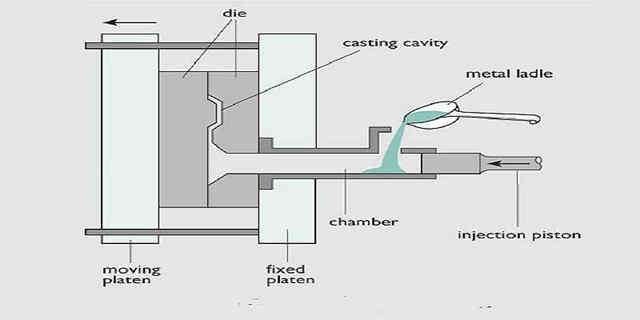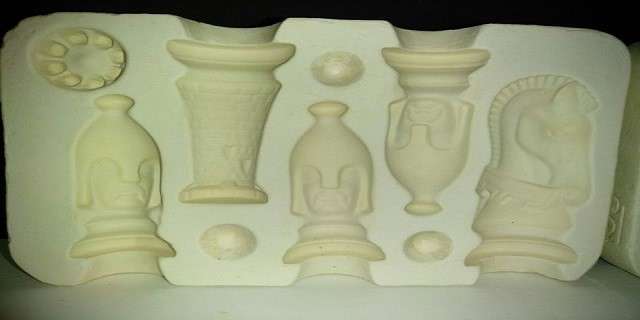Day by day, the manufacturing industry is improving its prototyping capabilities by implementing new and improved manufacturing methods. Casting parts are one of such manufacturing techniques that is cost-effective and can be used to produce a variety of products. Ingenuity and advancements have transformed the casting industry, and it has become more effective, clean, and safe.

There is a wide and diverse range of casting alloys available which offer the selection of suitable material to fulfill the prerequisite of the specific application. Every casting alloy has its particular mechanical properties, casting properties, heat treatment properties, and machinability. Casting parts has become an integral part of the manufacturing industry and can produce complex geometries with ease irrespective of the size of the part. Moreover, urethane casting has a little waste that can be reheated and used again, making it a very economical process for industrialists.
Casting manufacturing techniques
Casting Process
Casting is one of the oldest manufacturing techniques used in the industries that give the required results effectively and repeatedly. Casting includes the injection of some molten liquid into the mold, having the cavity of the desired shape. Then the molten liquid is allowed to solidify into the shape confronted by the mold. When the desired product is obtained, it is extracted from the mold.

Casting can be classified into many types depending upon the nature of the molten liquid, some of which are:
- Evaporative-pattern casting.
- Permanent mold casting.
- Die casting
- Sand casting.
- Plaster mold casting.
- Shell molding.
- Investment casting
- Casting Urethane Parts
- Metal casting
Casting Molds
Casting mold is significant in the casting process. The product’s final shape depends upon the shape of the cavity in the mold. The liquid injected into the mold is solidified into the shape confronted by the shape of the cavity. There are several types of molds used in casting parts. Some of the molds are temporary and are destroyed after casting parts. On the other hand, some of the molds are permanent and can produce the parts again. Molds can either have a single or double cavity. In multiple cavities, each cavity might produce the same parts or different producing different parts. The selection of the mold depends upon the desired characteristics of the products. Some of the commonly used molds are enlisted below:
- Sand Mold
- Ceramic Mold
- Permanent Mold
- Multi-piece mold
- Die casting mold

Urethane Casting
In Urethane Casting or urethane molding, certain materials that cannot be handled by a CNC machine or any other machining unit, such as soft rubber parts, are used. The first step is to create a 3-D printed master pattern required to form a mold for the casting process. The soft mold is silicon and results in high-quality plastic parts. However, there is a limitation of size as products can be up to 30 inches. In addition to that, urethane casting requires careful consideration of the properties of the 3-D printed master pattern.
In terms of accuracy and precision, urethane part casting is up to the standards with an extremely high tolerance of about ± 0.005 inches. Other problems associated with casting, such as shrinkage and cavities within the geometries, can be easily dealt with by employing standard procedures and alternating the geometry of the riser.
Advantages Of Casting Parts
Casting is one of the oldest manufacturing methods used by manufacturers worldwide, and it is one of the most preferred manufacturing methods due to its advantages. Some of the benefits of casting are enlisted below:
1. Production of Complex Geometries with ease
Due to geometry and properties, some products can only be cast and produced by any other manufacturing technique. Casting is a cheaper method to produce complex geometries and highly detailed parts. In casting, the pressure is applied on the molten liquid against the mold, due to which highly detailed parts can easily be manufactured. Moreover, applying pressure on the material is also helpful in producing complex geometries that would be either difficult to produce or expensive to produce.
2. Less Manufacturing Cost
In casting products, the residual waste is very much less than other manufacturing techniques. Moreover, the waste material can be heated and reused, reducing the manufacturing cost. The introduction of automation in this manufacturing technique has replaced human labor with robots that can control the machines with greater efficiency, reducing labor costs. Hence cheaper manufacturing technique is available to the industrialists by introducing automation.
3. High Production Rate
In casting parts, a mold may be used to produce products repeatedly. The repeatability of this process makes it a useful manufacturing tool for the industrialists producing the same parts again and again with fewer amendments. The production efficiency can also be enhanced by enhancing the quality of the mold used.

Applications of Casting
Casting parts has become an integral part of the manufacturing industry and can produce complex geometries with ease. Some significant applications of casting are enlisted below:
- Aluminum & all other Non-Ferrous Parts
- Chemical Process Equipment
- Earthmoving Equipment
- Agriculture Equipment
- Automobile Casting Equipment
- Pumps and Valves Component
- Scientific Casting Equipment
Concluding Remarks
So casting parts is one of the most employed manufacturing techniques by the industrialists due to its low cost and high production rate with lesser errors. Applications of casting are found almost in every industry, making it a widely used manufacturing technique worldwide.





